
The First Kushaq Is Ready Ahead Of The SUV’s Launch This Month
- Jun 7, 2021
- Views : 5243


VW Group is executing its India 2.0 strategy, which involves two new SUVs from Skoda and Volkswagen. The Kushaq (Skoda) and Taigun (VW) pairing will take on the segment heavyweights, Korean siblings: Hyundai Creta and Kia Seltos. But is the Taigun any different from the Kushaq despite sharing the same platform or do they have distinct identities? Let’s find out.
Face Value
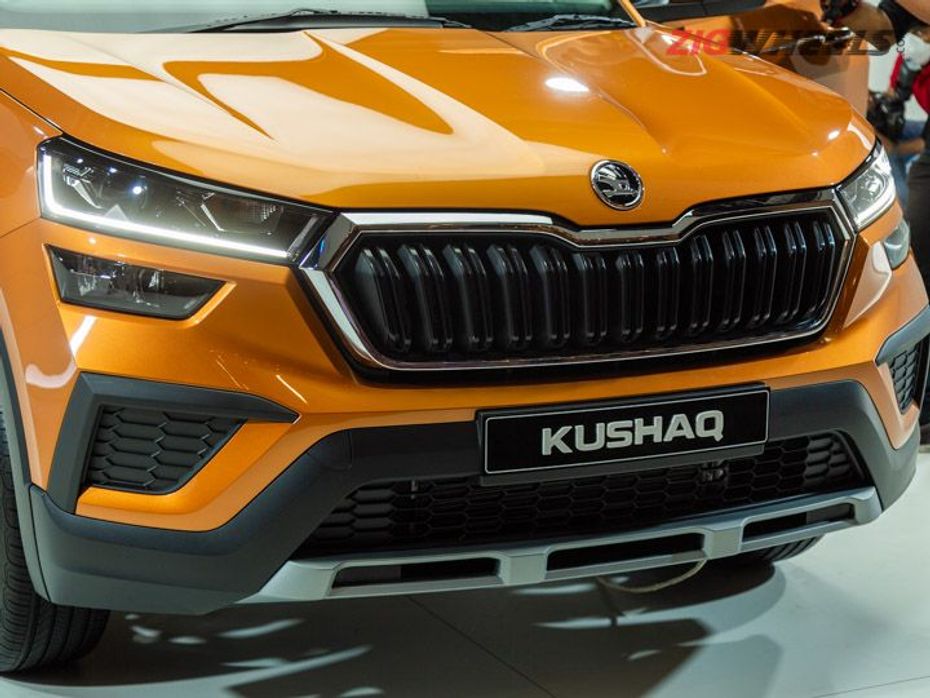
Both SUVs retain most of the design elements from their respective concepts. The Kushaq gets Skoda’s traditional butterfly grille, flanked by sleek LED headlamps, giving it a classier appearance, while the Tiguan-esque slatted grille, upright hood, and the square LED headlamps make the Taigun look more SUV. The VW SUV also sees a generous use of chrome.
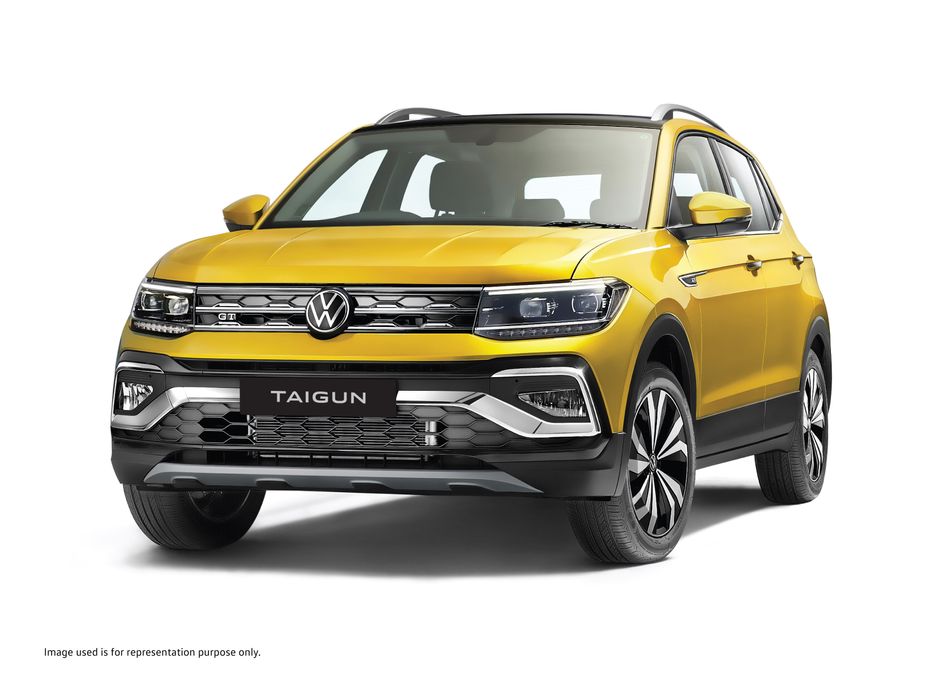
It is on the side that they bear the most resemblance to each other. While the style of the badging on the front fender is different, the way it flows into the character lines is similar. The doors, shoulder line, and silhouette are similarly styled between both models. The only differentiating bits are the 17-inch wheels and the badge.
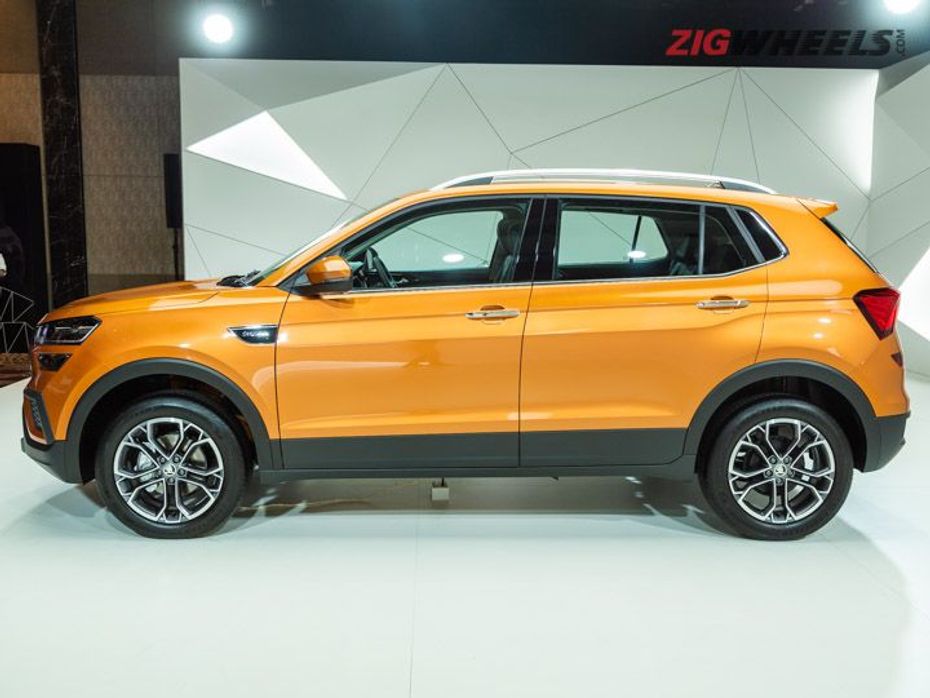
Both models get diamond-cut dual-tone 17-inch versions of the alloys seen in the respective concept models. However, the Kushaq’s wheels get a unique design that looks a lot better. At the rear, the Kushaq gets L-shaped LED tail lights with crystalline elements. But it’s the VW’s connected units that give it a modern look, especially at night.
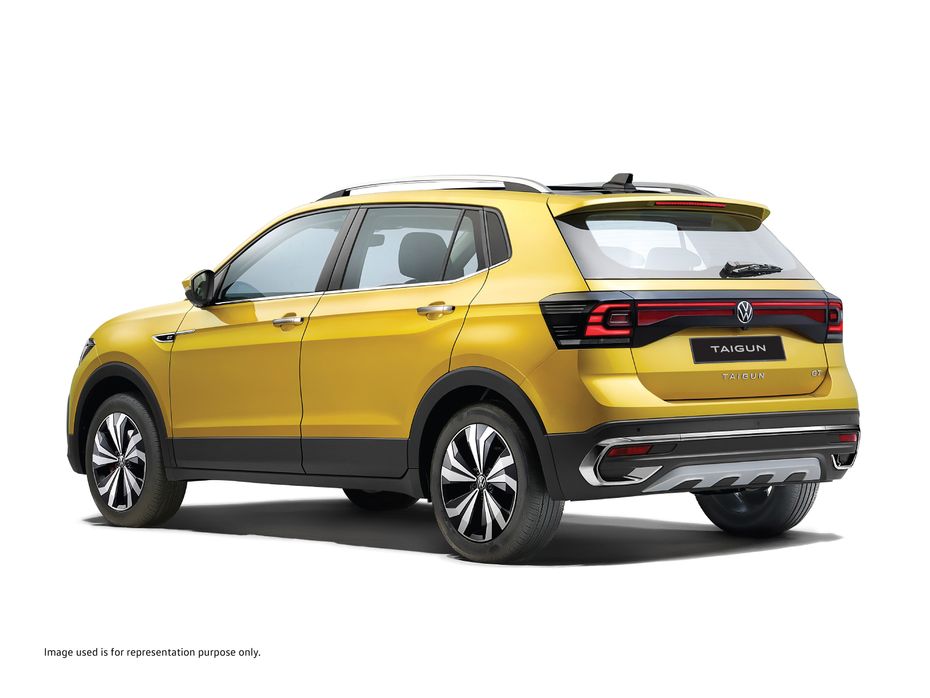
Overall, the Kushaq looks more sophisticated whereas the Taigun is more rugged and sportier.
Number Game
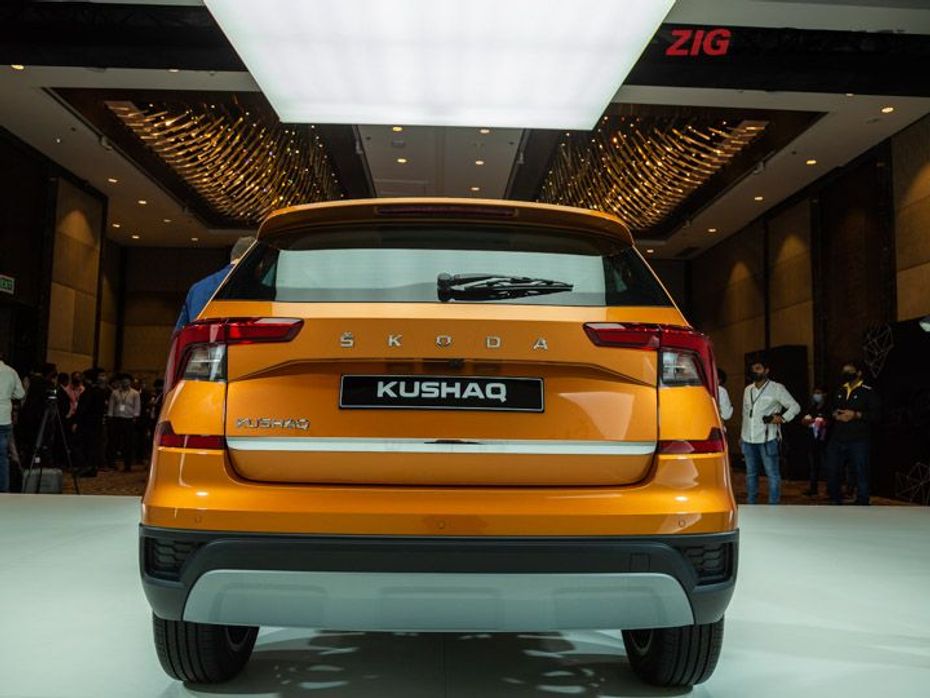
Both SUVs are based on VW Group’s heavily localised MQB-A0-IN platform. We have the dimensions for the Kushaq and while appearances may differ, the measurements of the Taigun should be more or less the same. Though not the longest (4,221mm), widest (1,760mm), or tallest (1,612mm), the two SUVs sport a longer wheelbase (2,651mm) than their Korean rivals (2,610mm).
The Cabin: Classy vs Understated
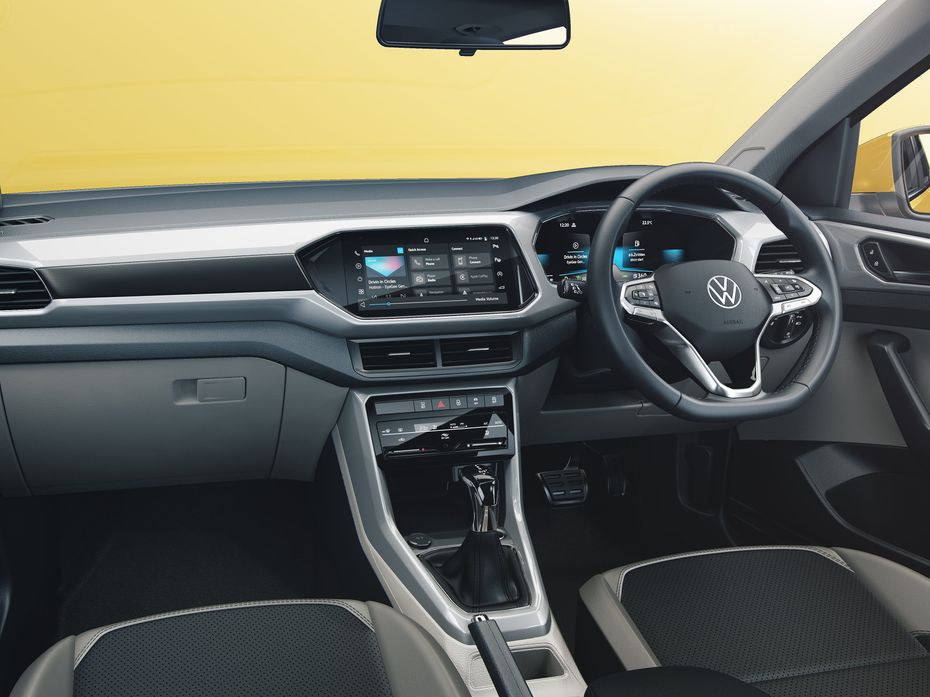
Like their exteriors, the interiors are also quite distinct. The Skoda looks classy while the VW retains its understated nature. The tacky colourful bits on the Taigun’s dash have been replaced by a neutral grey colour. The layout is also simple and all the controls are positioned well, complemented by the new flat bottom steering wheel and digital driver’s display.
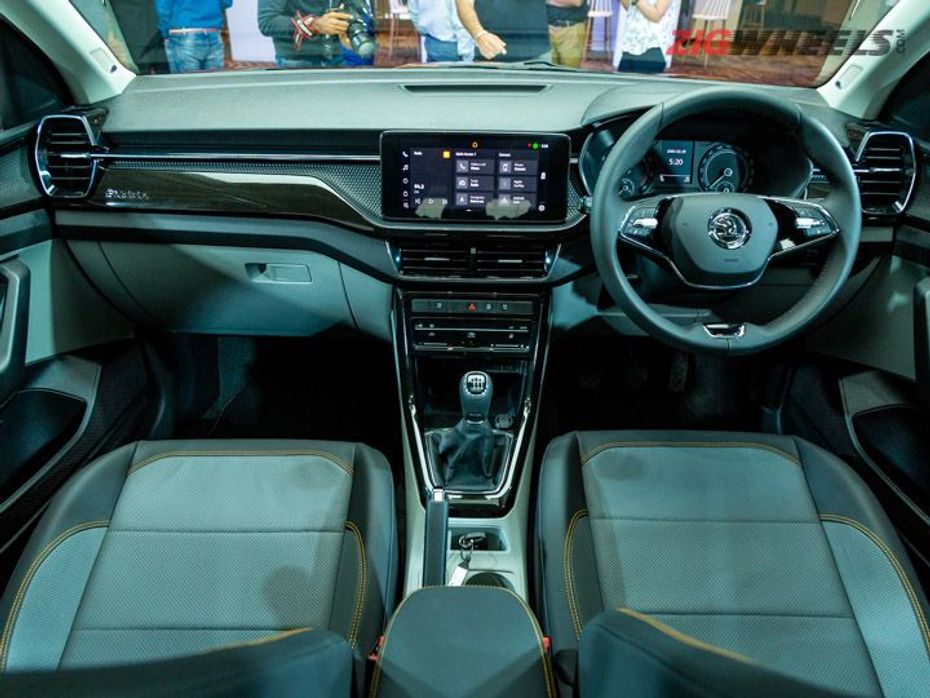
The Skoda, on the other hand, has a classier interior layout with a floating infotainment system and the use of gloss black material. The two-spoke steering also feels great to hold and the metal knobs on it work with a satisfying click. Yes, it retains dials, but it goes quite well with the cabin.
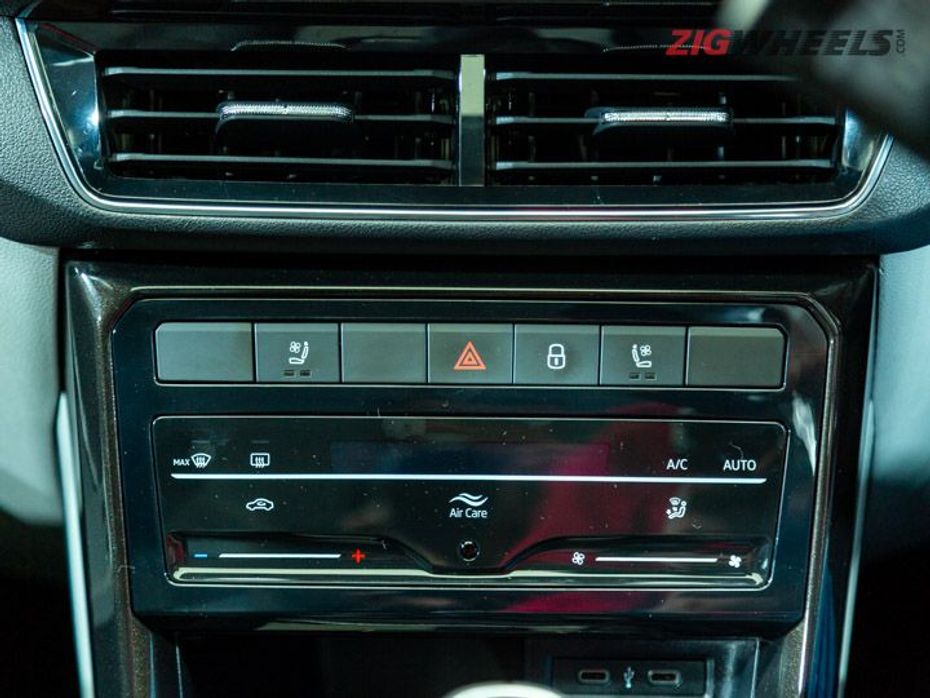
One common thing between both SUVs that this author didn’t like are the touch-based AC controls that require you to take your eyes off the road.
Some bits are common between the two SUVs, which we’ll discuss next.
Loaded With Features
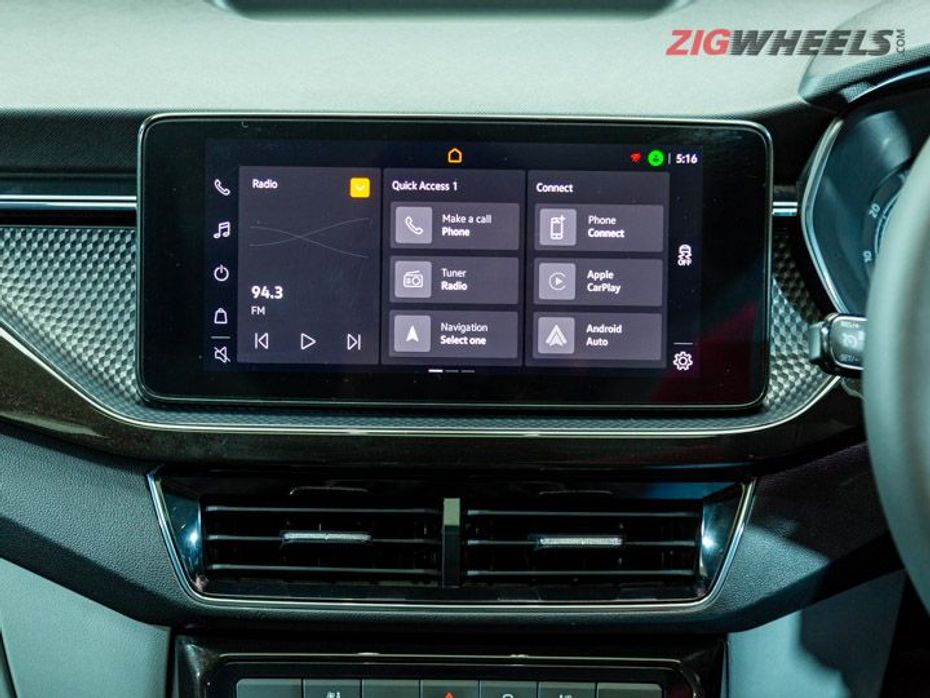
So both SUVs miss out on some exclusives when compared to the Korean heavyweights but they feature enough for the common man. The two are equipped with a 10.1-inch floating touchscreen infotainment display, connected car tech, single-pane sunroof, touch-based climate controls, wireless Android Auto and Apple CarPlay, a six speaker sound system with subwoofer, rear AC vents, and cruise control.
Safety duties are handled by ABS with EBD, up to six airbags, parking sensors with a camera, electronic stability control, and a tyre pressure monitoring system.
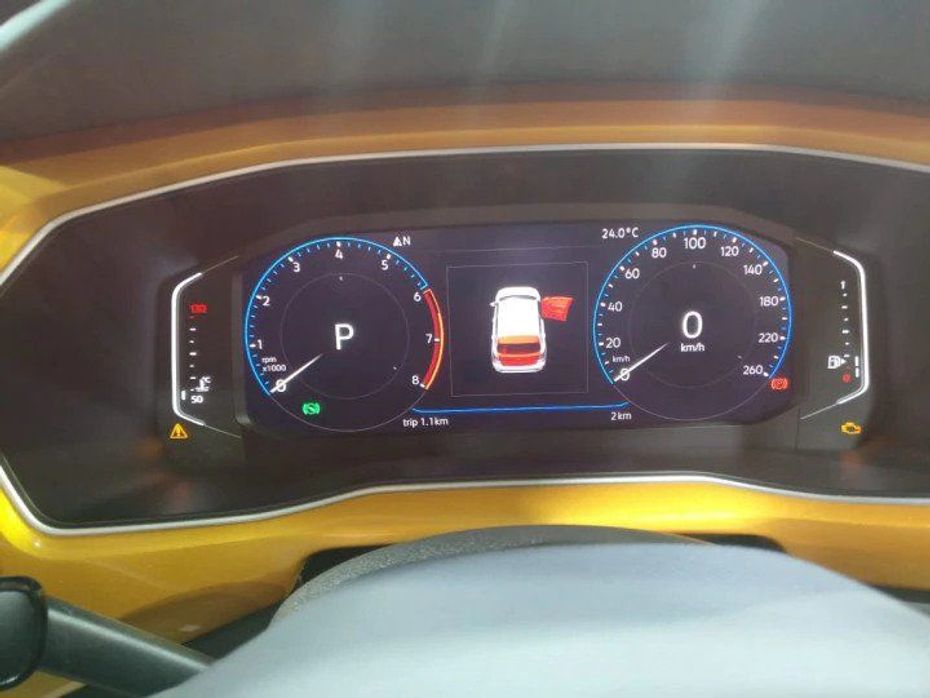
Interestingly, there’s one thing the Kushaq misses out on that the Taigun gets: a digital instrument cluster. But the Kushaq one ups the Taigun with its ‘Simply Clever’ features: strings in the door pads to hold objects in place and reflector dots on the doors.
Now to those creature comforts exclusively offered by the Koreans. The Creta comes with a panoramic sunroof while the Seltos gets a nifty blind-spot monitor and a head-up display. These are feel-good features, something you can live without.
Same TSI Hearts
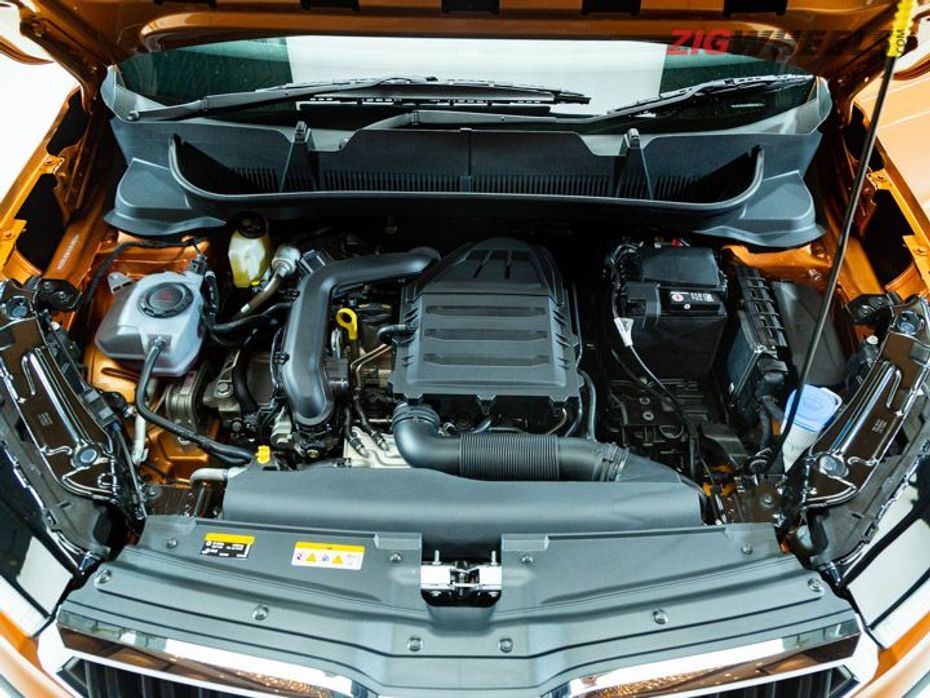
The most significant trait, common to both SUVs, are the engines. They are powered by the VW Group’s 115PS/175Nm 1.0-litre and 150PS/250Nm 1.5-litre turbo-petrol engines. It must be said both engines are up to the mark when it comes to hooning around. A 6-speed manual is offered as standard, however, the smaller engine gets a 6-speed automatic option, whereas the bigger one gets a 7-speed DSG.
Deep Pockets Required?

Thanks to heavy localisation, the Kushaq is likely to be priced from Rs 9 lakh to Rs 17 lakh (ex-showroom). The Taigun, too, should be priced in the same range. However, the SUVW will also get a sportier GT Line trim, which the Kushaq will miss out on. The Taigun will arrive after the Kushaq, which is set to launch in June, unless the pandemic plays spoilsport.
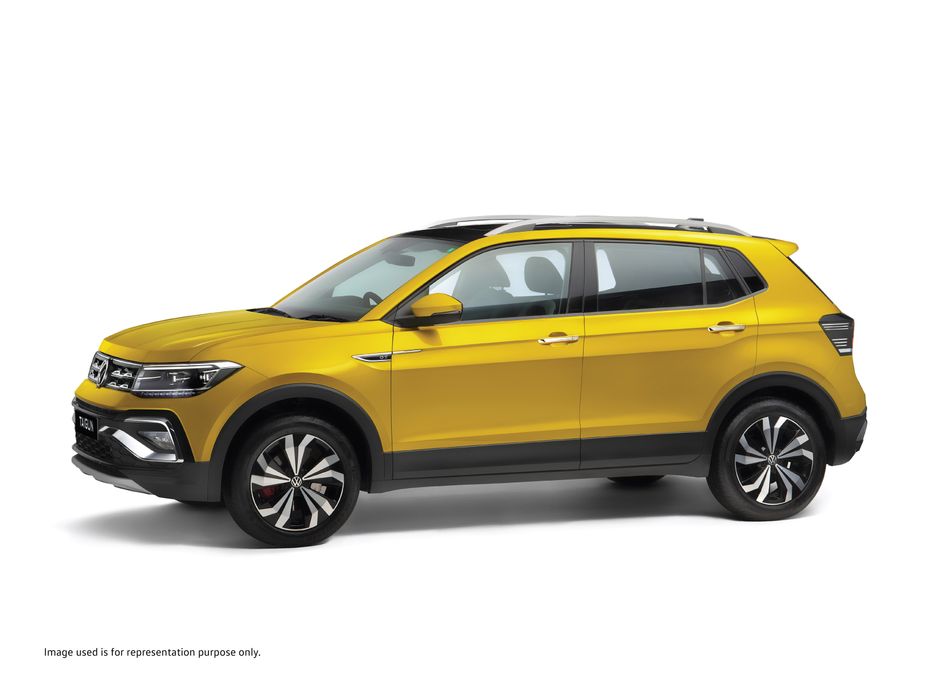
At the end of the day, both SUVs are significantly different and yet quite similar. It all boils down to the design and brand value. Let us know in the comments which of the two you’d prefer.


The First Kushaq Is Ready Ahead Of The SUV’s Launch This Month

Skoda Kushaq, Volkswagen Taigun Spotted Together

The Skoda Kushaq Continues To Be On Track For A June Launch

Skoda Kylaq Vs Kushaq: A Detailed Comparison Of Their Specifications!

Skoda Kylaq Prototype vs Production-spec Kushaq: A Look At The Design...

Upcoming Skoda Kylaq: New Details Including Powertrain And Features...

Price Cut Alert! Skoda Slavia And Kushaq Prices Reduced By Up To A...

Skoda Kushaq Onyx AT Launched, Undercuts Previous Base AT Variant By...
 Volkswagen Taigun
Volkswagen Taigun
 Honda Elevate
Honda Elevate
 Tata Nexon
Tata Nexon
 Mahindra XUV 3XO
Mahindra XUV 3XO
 Hyundai Alcazar
Hyundai Alcazar
India's largest automotive community
 Skoda Kylaq Is Now India’s Safest Sub-4m SUV! Safer Than Nexon And Mahindra XUV 3XO
Skoda Kylaq Is Now India’s Safest Sub-4m SUV! Safer Than Nexon And Mahindra XUV 3XO
 Auto Expo 2025: Toyota Prius Explained In Our Detailed Image Gallery!
Auto Expo 2025: Toyota Prius Explained In Our Detailed Image Gallery!
 Here’s When The Audi RS Q8 Facelift Will Be Launched In India!
Here’s When The Audi RS Q8 Facelift Will Be Launched In India!
 Here Is The List Of Cars Tata Showcased At Bharat Mobility Global Expo 2025
Here Is The List Of Cars Tata Showcased At Bharat Mobility Global Expo 2025
 Skoda Kylaq
Rs. 7.89 Lakh
Skoda Kylaq
Rs. 7.89 Lakh
 Skoda Slavia
Rs. 10.69 Lakh
Skoda Slavia
Rs. 10.69 Lakh
 Skoda Superb
Rs. 54.00 Lakh
Skoda Superb
Rs. 54.00 Lakh
 Skoda Kodiaq
Rs. 39.99 Lakh
Skoda Kodiaq
Rs. 39.99 Lakh
 Hyundai Creta
Rs. 11.10 Lakh
Hyundai Creta
Rs. 11.10 Lakh
 Tata Punch
Rs. 5.99 Lakh
Tata Punch
Rs. 5.99 Lakh
 Mahindra Thar ROXX
Rs. 12.99 Lakh
Mahindra Thar ROXX
Rs. 12.99 Lakh
 Tata Nexon
Rs. 7.99 Lakh
Tata Nexon
Rs. 7.99 Lakh
 Mahindra XUV700
Rs. 13.99 Lakh
Mahindra XUV700
Rs. 13.99 Lakh